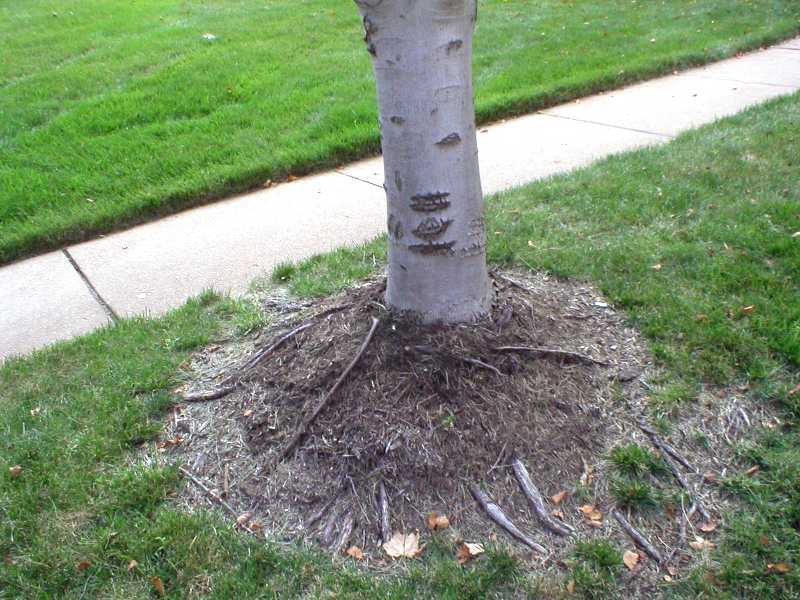 |
Mulch piled against the trunk of tree can force the tree to compensate by developing adventitious roots from the trunk and surface roots. |
Many homeowners plant new trees and shrubs that fail to survive a full growing season. They frequently blame the nursery for selling them poor stock or the person who planted them for planting them incorrectly. Although this could be the reason, the most common cause is improper care after planting. The following are some factors to consider and investigate before the nursery is held responsible.
1. Improper watering. Improper watering is probably the most common reason why a plant dies before it becomes established. A newly planted tree or shrub has a small root system and can dry out very quickly in dry weather. On the other hand, if the root ball is kept too wet, the plant’s roots may rot. Maintaining the correct balance is imperative.
2. Plants with small root balls can dry out very quickly in hot weather. They may need watering daily or every other day when first planted, but the goal should be to extend the time between watering as the plant becomes established. During establishment the goal should always be to maintain even soil moisture in the root ball and surrounding soil so roots can easily move into the surrounding soil. A single severe drying event can kill new transplants!
Once the root ball dries out, it may be difficult to get it wet again. Also, even though the surrounding soil is moist, moisture may not be able to move into the dry root ball. The plant can quickly wilt and die before the roots have moved into the surrounding soil. Conversely, if the root ball is kept moist, but the surrounding soil is dry, roots will not move out of the root ball making them very vulnerable to moisture fluctuations or winter damage. Balancing water requirements is the most critical factor in establishing new trees and shrubs.
3. Wrong location. It should be obvious that a plant that needs full sun should not be planted in the shade or vice versa, but still people push the limits. Shade plants grown in too much sun will burn up. Sun plants growing in too much shade may lose vigor and eventually die. Plants that need a well-drained soil may also die quickly if planted in wet soils where they are susceptible to root rots.
4. Plant not hardy. Learn which USDA hardiness zone your garden is located in. Lower numbers are assigned to colder climates and higher numbers to warmer regions. Always choose plants rated hardy to your zone or more preferably to at least one zone colder than the one in which you reside.
5. Excess summer heat. Certain plants best adapted to climates with cool summers may not perform well in locations with hot, humid summers. Poor growth, yellowing or bleached foliage, and dieback may all be signs that your plant is suffering from heat stress. As opposed to sudden death from cold or freezing conditions, death from heat is generally preceded by gradual decline.
6. Mechanical damage to trunks. The trunks of young trees can be very vulnerable to damage from weed whips, mice and rabbit feeding, or bumping with tools, lawnmowers or other equipment. Protect the trunk of young trees with a guard and keep grass or weeds from growing close to the trunk. Do not mound mulch up around the trunk which can invite rodents, insects, and/or disease organisms. Instead apply it in a "donut" fashion tapering down to only 1-2 inches closest to the trunk.
Organic Strategies
All of the recommended IPM strategies are strictly organic approaches.
More images:
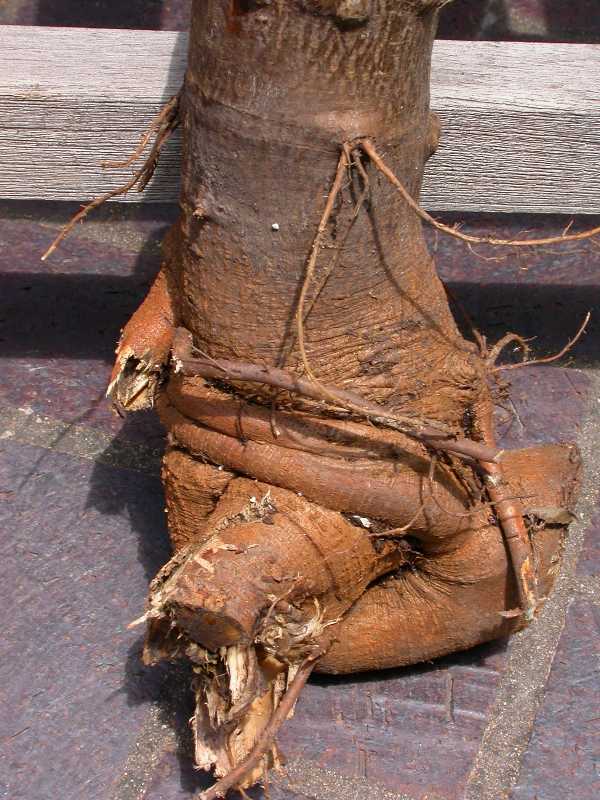 |
| Trees that are planted too deep, like this Japanese tree lilac (Syringa reticulata), try to survive by growing a second set of roots closer to ground level; [also has girdling roots] |
|
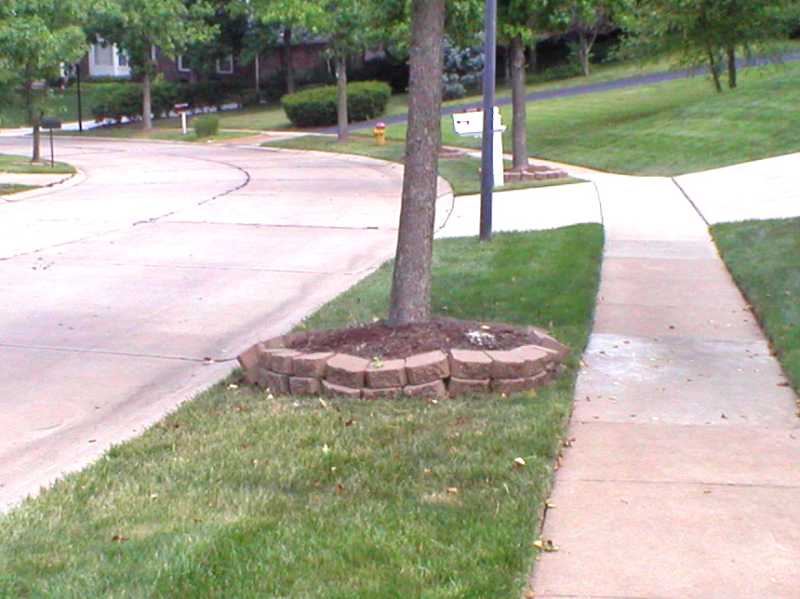 |
| Mulch piled against the trunk of a tree can create conditions conducive to rot in the trunk |
|
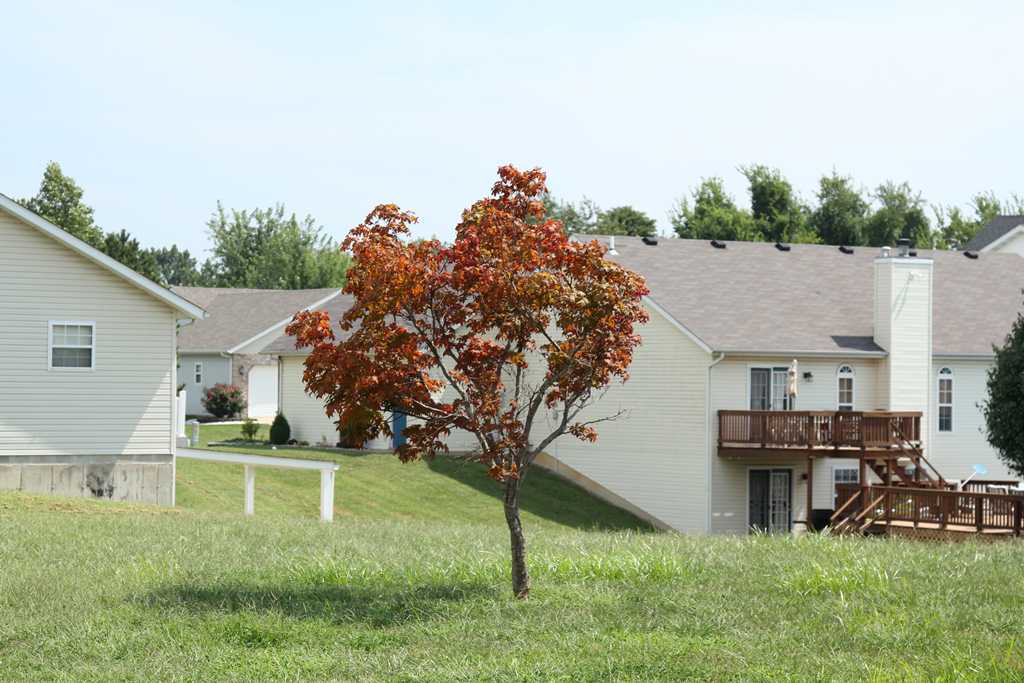 |
| Early fall color (note green trees in background) can indicate that a tree, such as, this maple (Acer) has failed to establish and will die. |
|
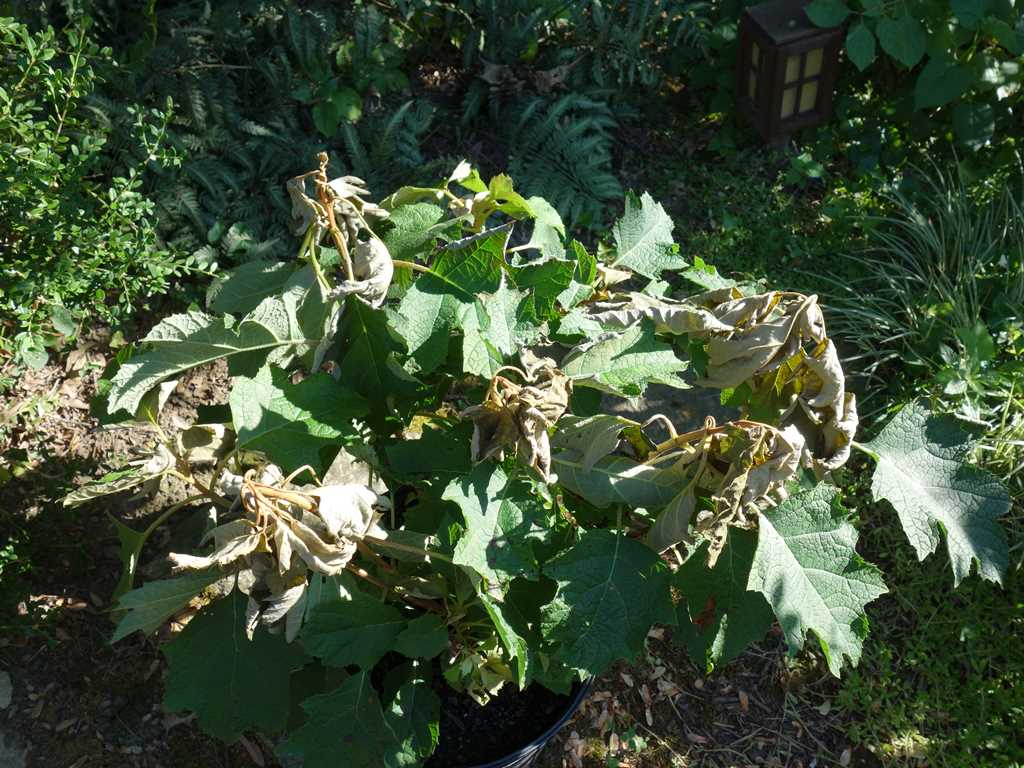 |
Transplant shock of oakleaf hydrangea (Hydrangea quercifolia)
|
|